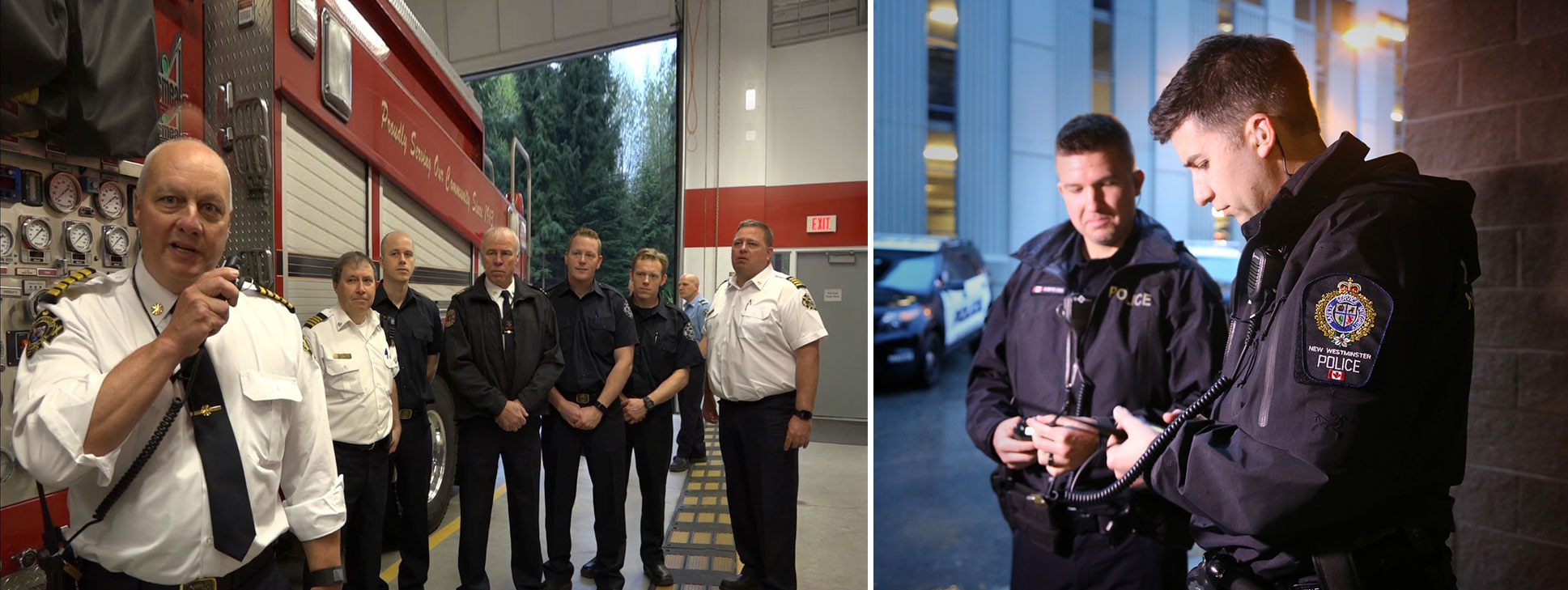new radio system
First fire and police departments transition to new radio system


On April 5, the New Westminster Police Department (NWPD) became the first of 32 emergency-service agencies in the Lower Mainland to transition from the current regional radio system to the new “next generation” digital P25 network. Port Moody Police Department followed just minutes later that same morning. This was a historic day for the Next Generation Radio Program (NGRP) and public safety, in the planned replacement of a radio system that supports first responders across Metro Vancouver and Abbotsford and the more than 2.4 million residents they serve.
“Overall, it is an enhanced radio system that gives us more reliability and dependability for our officers and the public.”
Chief Constable Dave Jones,
New Westminster Police Department
Following NWPD’s cutover, Chief Constable Dave Jones spoke about the various benefits of the network. “It’s all about the extra features that come with the new system including enhanced communication, better audio penetration going into buildings and network encryption. Overall, it is an enhanced radio system that gives us more reliability and dependability for our officers and the public.”

“The new network has been proven to provide enhanced coverage and audio clarity in challenging, noisy and hazardous environments, improving firefighter safety.”
Chief Ron Coulson,
Port Moody Fire-Rescue
E-Comm Vice-President of Technology Services Mike Webb, who led the team involved in establishing Metro Vancouver’s first interoperable radio system, was incredibly proud listening to the first broadcast come over the airwaves. “The launch of our original wide-area radio system back in 1999 was the catalyst for consolidation of emergency communications in our region, and now here we are introducing the next generation system and increasing the value we are capable of providing to our first responder partners.”
Another important NGRP milestone was realized April 25, as Port Moody Fire-Rescue (PMFR) became the first fire department in British Columbia to operate on a P25 digital network. Because of the significant advancements in the performance of digital audio over the past few years, the system is capable of providing better audio clarity and coverage for fire services, which up until this point have been using analogue channels as historically, they performed better in firefighting conditions.
“As firefighters we work in challenging environments that include collapsed buildings, fire-engulfed structures, tight underground spaces and exposure to wet working conditions from hose spray,” said PMFR Chief Ron Coulson. “The new network has been proven to provide enhanced coverage and audio clarity in challenging, noisy and hazardous environments, improving firefighter safety.”
To date, 11 agencies have migrated to the new system and although transitions will not take place over the summer, they will pick up again in September with the goal of having all agencies moved over by the end of the year.
“Transitioning to new technology always has unique challenges and with a project of this magnitude we know there will be unexpected hurdles,” added Webb. “We know this is a significant change for users and I’d like to thank our partners for their support. I’d also like to thank and acknowledge the NGRP team for working hard to address issues in a timely manner.”

To further strengthen the network’s backup coverage in the unlikely event of a radio site outage, the NGRP team has also been developing a new portable radio trailer that will have a built-in tower that can act as a temporary radio site if necessary. This will increase overall redundancy and further enhance the level of service E-Comm is able to provide to its radio partners.
“Portable trailers have been used by cellular companies for years in order to deal with service outages,” explained NGRP Senior Project Manager Cleve Pryde. “They allow you to move the temporary solution to wherever the problem happens to be. Cellular companies always name their trailers after an animal. So our Wireless team decided to name ours EMU; Emergency Mobile Unit.”
The portable trailer weighs 8,100 kilograms and is more than 30 metres high.


